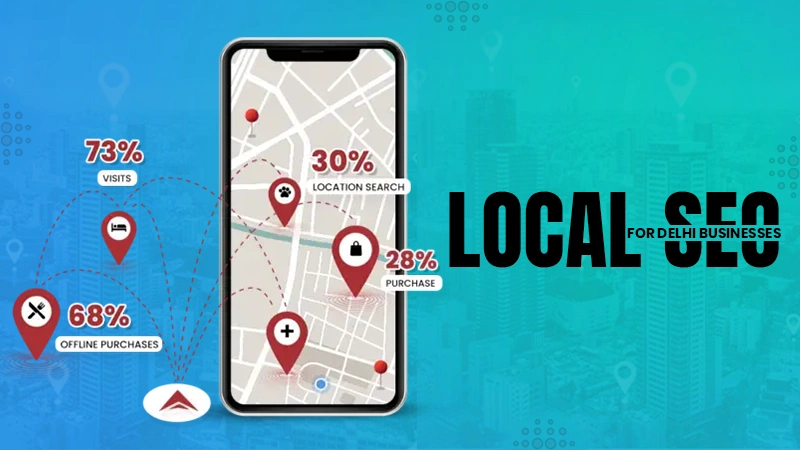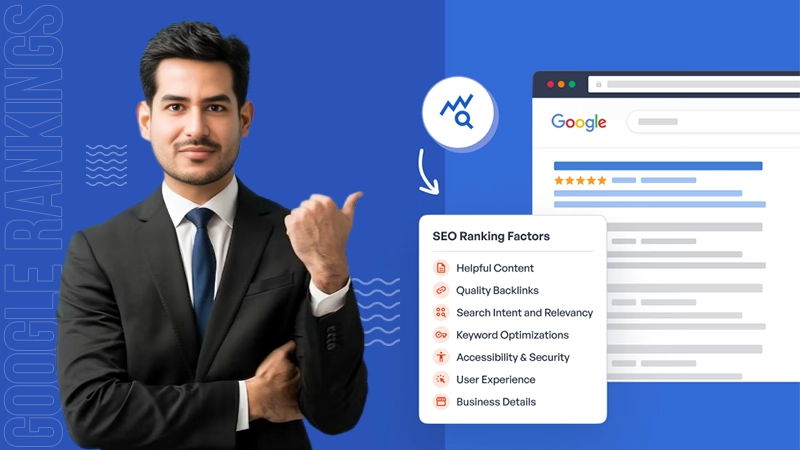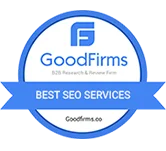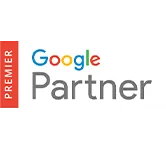Programmatic Advertising Explained: What is Programmatic Advertising? How It Works and its Benefits?
In the world of online marketing for brand awareness, programmatic advertising is revolutionizing the way businesses connect with their target audiences.
But what exactly is programmatic advertising, and how does it work? You’ll find answers to these questions right here.
From its automated buying process to optimizing ads in real-time, understanding how this innovative approach is changing the advertising game is the need of the hour, especially if you’re working in this field.
So, let’s delve into the details to explore the ins and outs of programmatic advertising and uncover the strategies that make it successful compared to traditional advertising methods.
After all, it’s only when you have a complete understanding of it, you’ll be able to harness its power for your company’s benefit, right!
- What Is Programmatic Advertising?
- How Does Programmatic Advertising Work?
- How Is Programmatic Advertising Better from Traditional Media Buying Methods?
- How Does Programmatic Differ from Display Ads?
- What Are the Types of Programmatic Advertising Platforms?
- What Are the Benefits of Programmatic Advertising?
- How to Run Programmatic Ads?
- Bonus: Real-Brand Examples of Programmatic Advertising to Inspire Your Next Ad Campaign!
- Wrapping Up
- FAQs
What Is Programmatic Advertising?
In contrast to manual display advertising, programmatic advertising is a method of buying and selling digital ads through an automated process.
It uses algorithms and real-time bidding to target specific audiences across different online platforms like websites, social media, and mobile apps.
Through data analysis and machine learning, this form of advertising aims to deliver personalized ads to the right audience at the right time – to improve campaign effectiveness and ROI.
To put it simply, in programmatic advertising, your brand or agency ads reach your ideal audience through automated systems, unlike traditional digital advertising, which involves advertisers, publishers, and other intermediaries negotiating for buying and selling digital ads.
Overall, it wouldn’t be wrong to say that programmatic advertising benefits both advertisers and publishers by making ad buying more flexible, transparent, and scalable.
Key Facts to Check:
- As per a report by Statista, the amount of money spent in 2023 on programmatic advertising worldwide has reached approximately $558 billion, and it is projected that it will surpass the $700 billion mark by 2026.
- Though the United States remains the top market for programmatic advertising, other countries like China and the United Kingdom are also increasingly adopting programmatic buying practices.
How Does Programmatic Advertising Work?
Programmatic advertising works through automated systems that use algorithms to buy and sell digital ads in real-time. Brands and agencies set their targeting parameters, such as demographics and interests, and bid for ad placements.
Now, when a user visits a website or app, an auction occurs among advertisers competing for that ad space, and the highest bidder’s ad is then displayed to the user instantly.
This process happens in milliseconds, letting advertisers display their ads to the right target audience.
Also, data analysis and machine learning keep making the ad placements better over time.
How Is Programmatic Advertising Better from Traditional Media Buying Methods?
Programmatic advertising is considered better than traditional media buying in a way that it automates the process of buying ad space using technology and algorithms. It removes the need for manually figuring out where to place ads and, then, negotiating prices for that space.
Unlike traditional methods, which simply released ads into the digital space with the hope that their audience would pay attention, programmatic first looks at a ton of information about internet users. Then, it strategically decides where and when to show ads to make sure they reach the right audience and yield maximum benefits.
So, basically, with this form of advertising, brands, and agencies don’t need to stress over little details. The system handles everything itself and makes sure the ads appear in the best online media space to reach the right people.
And, above all, programmatic media buying guarantees speed and efficiency in ad posting that can never be matched by traditional media buying.
Also, Read: 10 Types of Propaganda Techniques in Advertising
How Does Programmatic Differ from Display Ads?
Thanks to programmatic and display ads, it’s never been easier for publishers to sell ad inventory and for advertisers to reach their target audiences. However, both these terms are used interchangeably, they are two different aspects of digital marketing.
So, let’s point out their main differences based on various factors—
| Factors | Programmatic Advertising | Display Ads |
| Purchase Process: | It uses multiple ad exchanges to buy ad inventory. | It uses a single closed ad network, like Google Display Network (GDN). |
| Ad Buying Process: | It is automated and buys ad space in real time using algorithms. | It involves manual negotiations with publishers and can be more time-consuming. |
| Ad Placement: | Programmatic ads are individually placed across various platforms. | Display ads are usually placed on specific websites or networks. |
| Targeting Options: | It provides highly specific targeting options using data and algorithms. | It offers less precise targeting options. |
| Real-time Optimization: | Programmatic ads can be adjusted in real time based on performance. | Display ads have limited options for any immediate adjustment. |
| Cost Structure: | It offers flexible pricing models such as CPM, CPC, or CPA. | Display ads often have fixed rates or CPM pricing. |
| Flexibility: | Programmatic ads can change campaigns easily. | They might need to renegotiate for changes. |
| Transparency: | It gives clear insights into ad performance and its placement. | Display ads have limited transparency, as they often rely on reports from publishers. |
What Are the Types of Programmatic Advertising Platforms?
While there are many types of programmatic advertising platforms available today, these three are the main ones–
Demand Side Platform [DSP]
These are tools used by advertisers, brands or agencies that want to advertise. They help them buy ad space across various websites and apps.
Wonder how? Well, DSPs use data and algorithmic tools to help companies show their ads to the right people.
Examples of DSPs include;
- AdRoll
- Adobe Advertising Cloud
- Simpli.fi
- Amazon Advertising
- RhythmOne
- Quantcast
- Criteo
- StackAdapt
- LiveRamp
- Google Display & Video 360
- PubMatic
- DemandBase
- The Trade Desk
- MediaMath
- Xandr (Microsoft)
Sell-Side Platform [SSP]
These are tools used by website owners or app developers. They help them manage and sell their ad space to advertisers, brands, or agencies.
Basically, SSPs make sure that the publishers earn the most money from their ad space by connecting them with advertisers willing to pay for it.
Examples of SSPs include;
- Adform
- Amazon Publisher Services
- Google Ad Manager
- PubMatic
- Index Exchange
- Magnite (Rubicon Project)
- Media.net
- OpenX
- StackAdapt
- Sovrn
- SpotX
- Sharethrough
- TripleLift
- Xandr (Microsoft)
Ad-Exchange Platform
These are places where advertisers and publishers meet to buy and sell ad space. It’s more or less like an auction house for ads, where on one hand, advertisers bid to show their ads on websites, and on the other hand, publishers choose the best offers to show ads on their sites.
Examples of Ad-exchange platforms include;
- AdRoll
- Amazon
- Google Ad Exchange
- InMobi
- Index Exchange
- Magnite (Rubicon Project)
- OpenX
- PubMatic
- Smaato
- Xandr (Microsoft)
- Yahoo
What Are the Benefits of Programmatic Advertising?
By reading so far, you’ve learned what Programmatic advertising is, how it works, and how it differs from traditional media buying. Now, it’s time to be aware of its benefits.
There are many benefits that this particular form of advertising offers. They include–
Targeted-Based Advertising
Programmatic advertising allows advertisers to target specific audiences based on factors like demographics, behavior, interests and, location, etc. In this way, it helps advertisers ensure that their ads are shown to the right people, making it more obvious that they’ll interact with the ad and make a purchase.
Increased Transparency
It offers advertisers clearer insight into where their ads are being placed and how well they are performing. Having this much transparency, advertisers can improve their campaigns (if needed) and make sure that their ads are being displayed in brand-safe environments.
Automation
By using data and algorithms, it automates the process of ad buying and removes the need for paperwork and manual negotiations. This benefits advertisers not only to save time and resources but also to let them concentrate on their strategy and creativity.
Real-time Data Tracking
Programmatic platforms also help advertisers track their campaigns closely and make any adjustments (if required) for better outcomes by providing them access to real-time data on how their ads are doing, including metrics such as impressions, clicks, conversions, and ROI.
Scalability
To help advertisers increase the potential reach of their campaigns and connect with more and more audiences wherever they’re online, programmatic advertising also lets them reach a wider audience across multiple channels and devices like computers, phones, social media, and smart TVs.
Budget Management
It even allows advertisers to manage budgets flexibly based on their respective goals and objectives. Advertisers can easily distribute their budget across various campaigns, channels, and audience groups to get the most out of their investment.
Cost-Effective
Last but not least, due to automation and real-time bidding processes, programmatic advertising can be more cost-effective than traditional media buying methods.
How to Run Programmatic Ads?
If you want to run programmatic ads, you’ve got to simply follow these steps–
- Step 1: First, choose a Demand-Side Platform (DSP) which helps you buy ad inventory across multiple ad exchanges and websites in real-time.
- Step 2: Then, set your campaign goals to decide whether you want to increase your brand awareness, lead generation, website traffic, or sales from your campaign.
- Step 3: Next, what you’ve got to do is define your target audience based on demographics, interests, behavior, location, and other relevant factors.
- Step 4: After that, create compelling ads such as eye-catching images, persuasive ad copy, or interactive video content that will resonate with your target audience.
- Step 5: Now, time for you to set your budget once you’ve decided how much you want to spend on your campaign, choose a bidding strategy from the following options;
- Cost Per Thousand Impressions (CPM),
- Cost Per Click (CPC), or
- Cost Per Acquisition (CPA).
- Step 6: In addition to that, you’ve to decide about ad placement i.e., whether it’s on specific websites, mobile apps, or on social media platforms where you want your ads to appear.
- Step 7: Once this is done, you should use targeting parameters to narrow down your audience to make sure your ads reach the most relevant users.
- Step 8: Now, you’re all set to launch your campaign and closely monitor its performance through impressions, clicks, conversions and, return on investment (ROI).
Pro Tip: Even after launching your campaign, you should continuously analyze your campaign data to identify areas for improvement so that you can refine your approach and achieve better results over time.
Bonus: Real-Brand Examples of Programmatic Advertising to Inspire Your Next Ad Campaign!
Now, you must see how real ads succeed using programmatic advertising to let their wins inspire you for your next ad marketing campaign–
Haleon, a Global Consumer Healthcare Company
In today’s digital age, where video content reigns supreme, Haleon recognized the power of combining programmatic techniques with great storytelling to grab people’s attention and drive results.
In its seasonal campaign of nasal products for congestion relief, Haleon uses the persuasive power of VAST video.
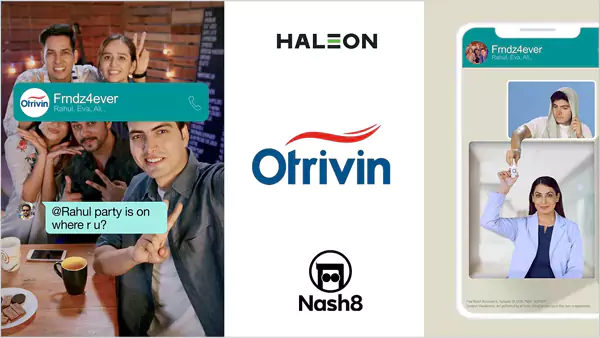
By crafting stories that connect with people, Haleon communicated the advantages of their product to make sure it appealed to their targeted audience.
And guess what the outcomes? They are remarkable!
Haleon, through its advertising efforts, not only met but succeeded expectations. Their views and impressions exceeded by significant margins.
So, this successful combination of VAST and programmatic advertising, not only increased Haleon’s brand visibility but also established Haleon as a leader in consumer healthcare innovation.
The Amanda Foundation, a Non-Profit Organization for Pets
In Los Angeles, the Amanda Foundation stands as a beacon of hope for animals. They came up with a cool idea to help furry friends find loving families.
Imagine how? Well, they used programmatic ads to pair pets with perfect owners.
Basically, they crafted a campaign that directly touches the hearts of potential pet parents.
They went beyond ordinary ads and by analyzing user data, they targeted ads to match people with pets based on preferences like type, breed, energy level, etc. This personalized approach of the NGO ensured that every pet found a happy home.
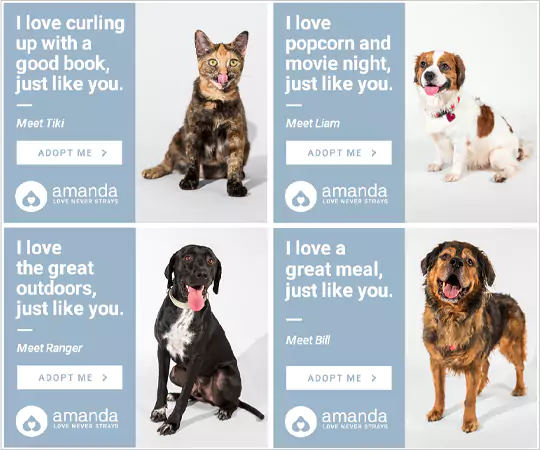
Needless to say, the Amanda Foundation proves that a little bit of tech and a whole lotta love can make a big difference, doesn’t it!
McDonald, a Well-known Fast Food Chain
McDonald’s also used programmatic advertising techniques in its last year’s campaign to target potential customers and get them into their restaurants.
With their ‘Raise Your Arches’ marketing campaign, they very cleverly personalized ads based on factors like the time of the day and the specific location of the viewers.

Wonder why? So that, whether you were scrolling through your phone in the morning, afternoon, or evening, McDonald’s could show you an ad that felt just right for you based on your cravings and your surroundings.
As a result, McDonald’s gained a significant increase in people visiting their restaurants, which also led to a rise in their sales. Well, this shows how effective programmatic advertising can be if done thoughtfully!
Other examples include Google, Nike, Coca-cola, Netflix, Procter & Gamble, Uber, etc. You can also look at them for more inspiration!
Wrapping Up
That’s all. Now you know why there’s so much buzz around Programmatic advertising in the digital marketing world, and you would agree that it’s worth the hype.
Programmatic advertising is a game-changer that transforms digital marketing through its automated processes, real-time data analysis, and well-precise audience targeting.
Compared to traditional media buying methods, it offers increased transparency, efficiency, scalability, and much more.
Using its technology and algorithms, brands and agencies can optimize campaigns, track performance, and improve their ROIs.
So, if you want your ads to work better and make more money in today’s digital marketing environment, then remember that using programmatic advertising is the key!
Next, you may like to read: How to Choose the Perfect Digital Marketing Agency?




